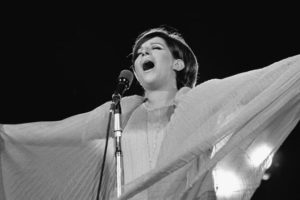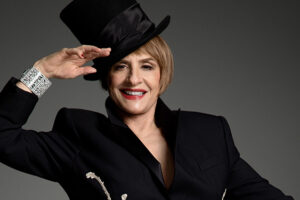

It’s the first non “American classic musical” that Broadway at Lyric has produced, and it came roaring into Chicago in a spectacular Timothy Sheader production which combined the forces of the mighty Lyric Opera with those from the original Regent’s Park Open Air Theatre production in London. The result is exhilarating, electrifying, rousing, occasionally flawed and often thrilling.
First, the audience… I’ve never seen so many young people and millennials at Lyric, and they were responsive and excited. Whether Lyric can convince them to show up next season is another question—I doubt we’ll be seeing these faces at Idomeneo or Siegfried. But it was refreshing nonetheless.
Webber’s pulsating score is played beautifully by the addition of members of the Lyric Opera Orchestra to the usual onstage rock ensemble, and Sheader has cast a remarkable ensemble of singer-dancers whose sound is embellished by members of the regular Lyric Opera Chorus. These singer-dancers are going to lose a whole lot of weight during this run—the brilliant, virtually non-stop choreography by Drew McOnie is highly physical, danced with precision and verve. Almost all the dancing is in unison, producing a visceral response from the audience.
Sheader has directed this piece, as he says in his program notes, as a “cross between a dance concert and a music gig.” Principals with hand mikes move downstage to sing their individual numbers directly to the audience. The magnificent setting by Tom Scutt involves angled platforms and two-leveled frames all backed by 7 full-size trees (I assume an homage to the open-air setting when the show played London).
It works beautifully with Lee Curran’s aggressive lighting, all spotlights and sharp angles, sometimes beamed directly into the audience. The staging is relentlessly passionate and dynamic, and the storytelling, particularly in the harrowing second act, is detailed and moving, clearly the story told through the eyes of Judas.
For me, the star of the evening was Ryan Shaw, who played a gutsy and three-dimensional Judas, genuinely concerned for Jesus even when betraying him. Shaw also knows his way around a microphone—unlike some of the other principals, his diction was superb. Also stunning was the determined, sweet-voiced Mary Magdalen of Jo Lampert, singing a heartfelt “I Don’t Know How to Love Him.”
Heath Saunders was a sympathetic Jesus, seeming surprised by the adoration of his followers and shocked by his own downfall. He sang an amazing “Gethsemane” with clean, stratospheric high notes.
I nearly jumped out of my seat when Cavin Cornwall as Caiaphas began to sing. Out came one of the deepest, clearest, darkest bass voices I have ever heard anywhere—and yet, his program bio contains no opera. Somebody grab this guy for Sarastro! He was superb, menacing and cruel.
Also effective were the Pilate of Michael Cunio, urgently seeking to avoid killing Jesus; Andrew Mueller as a sweet-voiced Peter; and Shaun Fleming as a truly creepy Herod, entering in a gold robe with a 28-foot long cape.
The only sticking point in this production was a sense that it was somewhat over-amplified, causing real difficulties in understanding the lyrics, particularly in the ensemble scenes. Now, I wore out my copy of the 1970 concept album (and invented my own dance of the 39 lashes to the delight of my grad school roommates), so I know virtually every lyric. But I can’t imagine that newcomers to the work would have a clue what was being sung by this huge ensemble. I actually wondered if using supertitles might have been helpful.
Still, if this music is to your taste, you’re unlikely to find a better production than this one. Go for the spectacular production, the stunning singing, the ravishing dancing. Go for the 90 pounds (!) of gold confetti used at every performance (it’s a thrilling effect). Go because it’s arguably the finest work of the rock opera genre.
Photo: Todd Rosenberg























Comments